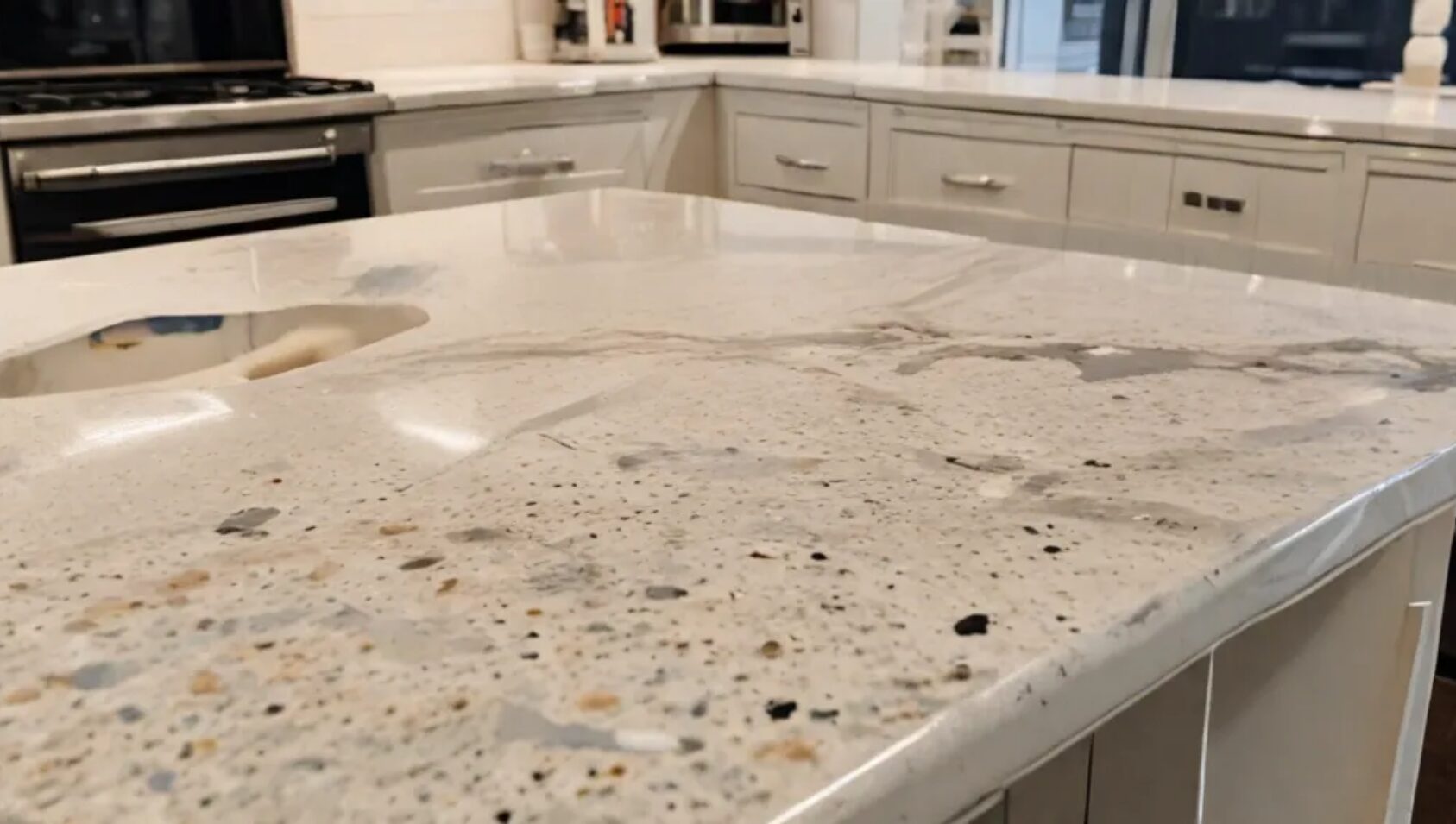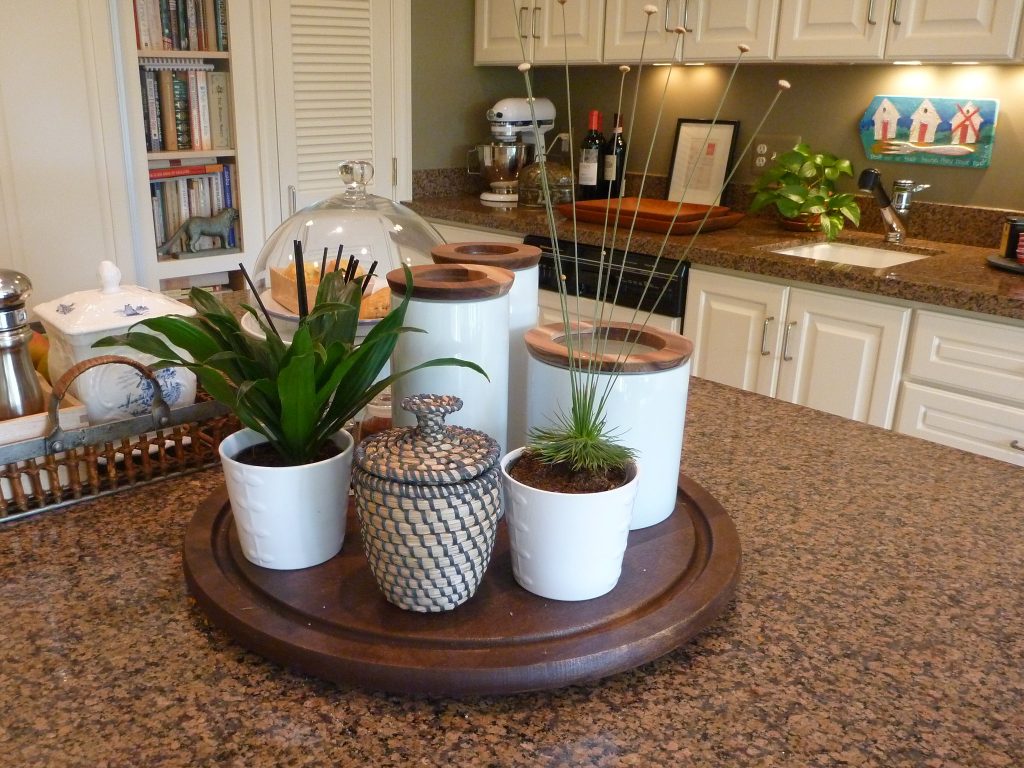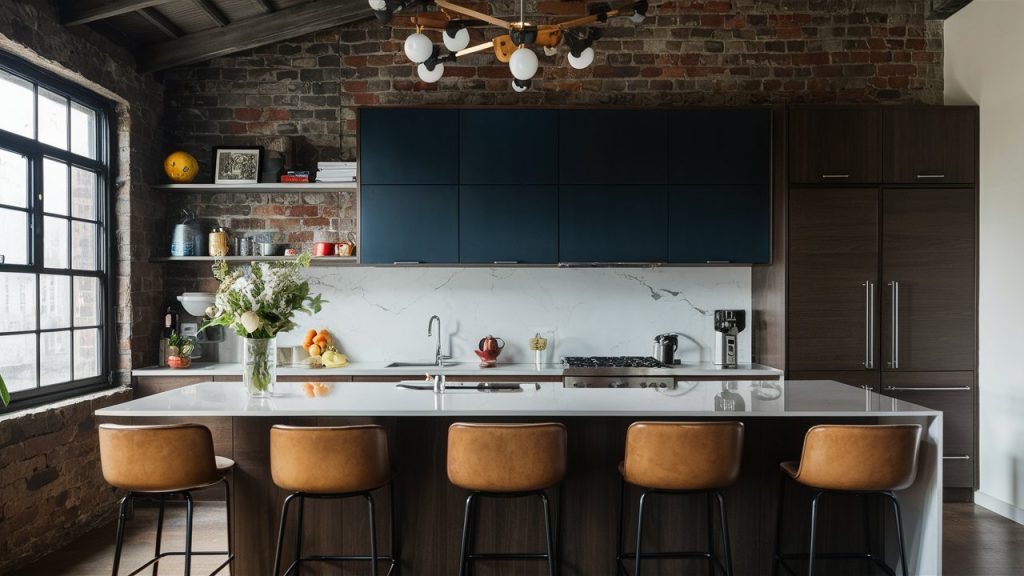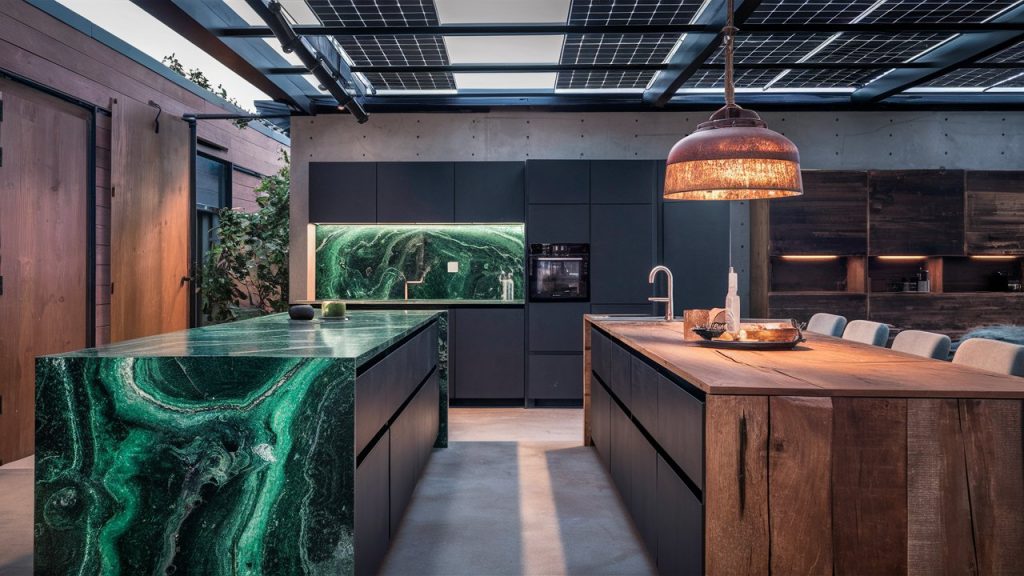Granite countertops have long been a top choice for homeowners seeking a durable, elegant, and timeless surface. However, as trends shift or countertops begin to show signs of wear, some people wonder: Can you paint granite countertops? The answer is yes—but there’s much more to the process than simply slapping on a coat of paint. Painting granite can breathe new life into your surfaces, but to do it right, you’ll need the proper preparation, tools, and techniques.
This guide will break down everything you need to know about painting granite countertops, from the products to use to the step-by-step process and even common mistakes to avoid. Whether you’re looking to save money, update the look of your kitchen, or address damaged surfaces, this article will give you the confidence to tackle this DIY project.
Key Takeaways
- Yes, you can paint granite countertops.
- Proper preparation is crucial for a long-lasting result.
- Use specialized paint products designed for stone surfaces.
- The process involves cleaning, priming, painting, and sealing.
- Granite countertops can look like new with the right techniques.
- Consider professional help if you’re unsure about DIY.
Table of Contents
What Makes Granite Countertops So Durable?
Granite countertops are known for their exceptional durability and timeless beauty. As one of the hardest natural stones, granite can handle heat, scratches, and general wear better than most materials. It resists stains and is non-porous, making it a solid choice for kitchens and bathrooms. But despite these remarkable qualities, granite is not impervious to the occasional scratch, discoloration, or wear from daily use.
While granite is tough, it also presents certain challenges when it comes to painting. The smooth, polished surface can make it difficult for paint to adhere properly without special treatment. Additionally, the surface’s density and low porosity can make sanding and priming essential steps in the preparation process.
Why Paint Granite Countertops?
Many homeowners opt to paint granite countertops to give their kitchens or bathrooms an updated look without incurring the high cost of full countertop replacement. Here are a few reasons why painting might be the right option for you:
Aesthetic Update
Granite countertops come in various colors and patterns, but they may no longer match your evolving design preferences. Painting your granite allows you to refresh the space with a new color or style without the expense of a complete renovation.
Cost-Effective
Replacing granite countertops is a significant investment. Painting, on the other hand, offers a more affordable way to update your surfaces. It’s a budget-friendly alternative that can make a big impact.
Transform Damaged Surfaces
Granite countertops can show signs of wear, such as chips, stains, or discoloration. If you’ve been thinking about replacing your countertops due to damage, painting can provide a cost-effective solution that revives their appearance.
Environmental Benefits
By painting your granite instead of replacing it, you’re making a more sustainable choice. It reduces waste and conserves resources, keeping your granite out of the landfill.
Can You Paint Granite Countertops? Yes – Here’s How
To successfully paint granite countertops, you must follow a step-by-step process to ensure a smooth, long-lasting finish. Here’s an overview of the key steps:
Preparation
Preparation is critical to the success of the project. Begin by thoroughly cleaning your granite countertops to remove any dirt, grease, or oils. After cleaning, you’ll need to lightly sand the surface to help the paint adhere.
Choosing the Right Products
The paint you choose should be specially designed for use on stone surfaces. Epoxy-based paints work best for granite because they are durable and resistant to heat and moisture.
Applying Primer
Next, you will apply a bonding primer. This step is essential to ensure the paint adheres well to the granite surface. Use a roller to apply a thin, even layer of primer and allow it to dry completely.
Painting Technique
Once the primer is dry, it’s time to apply the paint. Use a foam roller for smooth coverage and a small brush to reach edges and corners. Be sure to apply thin, even layers, allowing each layer to dry completely before applying the next.
Sealing the Finish
After the final coat of paint has dried, seal your painted countertops to protect the surface from damage. Choose a high-quality polyurethane or epoxy sealer to ensure a durable finish that resists scratches and stains.

The Best Paints for Granite Countertops
When selecting paint for your granite countertops, you’ll want a product that provides excellent adhesion and durability. Here are the best types of paints for granite:
Epoxy Paints
Epoxy paint is the top choice for painting granite countertops. It creates a strong, durable finish that mimics the look of natural stone. Epoxy paints are resistant to moisture, stains, and heat, making them ideal for kitchen surfaces.
Acrylic Paints
Acrylic paints are a more affordable alternative to epoxy, but they are less durable. While they can provide a smooth finish, acrylic paints are more prone to scratches and stains and require more maintenance over time.
Concrete and Stone Paints
Some paints are specifically designed for stone surfaces, including granite. These formulas offer superior adhesion and durability. If you’re looking for a textured finish, concrete and stone paints can give your granite countertops a unique look.
DIY Granite Countertop Kits
If you’re a beginner, consider using a granite countertop painting kit. These kits usually come with everything you need, including primer, paint, tools, and sealer. They offer a simple, convenient solution for DIY projects.
Table: Comparison of Popular Countertop Paints
| Paint Type | Durability | Adhesion | Cost Range | Best For |
| Epoxy Paint | High | Excellent | High | Long-lasting, heat resistance |
| Acrylic Paint | Moderate | Good | Low-Medium | Budget-friendly updates |
| Concrete/Stone Paint | High | Excellent | Medium | Custom texture finishes |
| Granite Kits | High | Excellent | Medium | Easy DIY solution |
Essential Tools You’ll Need for the Job
Before starting your granite countertop painting project, make sure you have the right tools on hand. Here’s a breakdown of the essential equipment you’ll need:
Cleaning Supplies
You’ll need a degreaser, microfiber cloths, or sponges to thoroughly clean your granite surfaces before painting. Proper cleaning is critical to ensure the paint adheres well.
Sandpaper and Abrasive Tools
Granite is smooth and dense, which makes sanding necessary for proper adhesion. Use 150-grit or 220-grit sandpaper to lightly scuff the surface.
Paint Applicators
Foam rollers and small brushes are the best tools for painting granite countertops. Foam rollers help achieve a smooth, even coat, while brushes allow you to reach edges and corners.
Sealing and Finishing Supplies
Once your paint has dried, you’ll need a high-quality polyurethane or epoxy sealer to protect your painted surface. Soft cloths or foam applicators are ideal for applying the sealer.
Necessary Tools for Painting Granite Countertops:
- Cleaning supplies (degreaser, microfiber cloths)
- Sandpaper (150-grit or 220-grit)
- Foam rollers and brushes
- Paint trays
- Polyurethane or epoxy sealer
- Gloves, mask, and safety glasses
How to Properly Prep Granite for Painting
Proper preparation is essential when painting granite countertops. Follow these steps to ensure a successful outcome:
Clean the Surface Thoroughly
Remove any dust, grease, or oil from the surface of the granite. Use a degreaser or soap and water to thoroughly clean the countertop. Dry it completely with a clean cloth before proceeding.
Sand the Granite Surface
Lightly sand the granite with 150-grit or 220-grit sandpaper to help the paint adhere. The sanding process creates microscopic grooves in the granite, which allows the primer and paint to bond more effectively.
Apply a Bonding Primer
After sanding, apply a bonding primer designed for stone surfaces. The primer ensures that the paint adheres properly and lasts longer. Use a roller to apply the primer in thin, even coats, and let it dry completely before moving to the next step.

Step-by-Step Process of Painting Granite Countertops
Now that your surface is properly prepped, here’s a detailed step-by-step guide to painting your granite countertops:
1. Clean the Surface Thoroughly
Use a degreaser or mild soap solution to clean your granite countertop, ensuring it’s free from dirt and grease. A clean surface allows better paint adhesion and ensures a smooth finish.
2. Sand the Granite to Ensure Paint Adhesion
Using sandpaper (220-grit is ideal), lightly sand the surface. This step helps the primer and paint adhere more effectively to the granite.
3. Apply a Primer
Choose a high-quality bonding primer specifically designed for granite. Apply the primer in thin layers with a foam roller, allowing it to dry completely before moving to the next step.
4. Paint the Granite Countertop
Apply thin, even coats of epoxy paint using a foam roller. Work in small sections and allow each coat to dry fully before applying the next. Be patient and avoid rushing this step to ensure an even finish.
5. Seal the Countertop for Durability
After the final coat of paint dries, apply a polyurethane or epoxy sealer to protect the painted surface. The sealer prevents scratches, stains, and water damage.
Common Mistakes to Avoid When Painting Granite Countertops
While painting granite countertops is a rewarding DIY project, there are common mistakes you should be mindful of:
1. Not Cleaning the Surface Properly
Before painting, ensure your granite surface is thoroughly cleaned. Any grease or residue left behind will affect paint adhesion and lead to peeling.
2. Skipping the Primer
Primer is essential for bonding the paint to the granite. If you skip this step, the paint may not adhere properly and can chip away.
3. Applying Too Many Layers of Paint
Multiple thick coats of paint can cause streaks and drips. Apply thin, even coats, and allow each layer to dry fully before applying the next.
4. Not Sealing the Finish
After painting, sealing your granite countertop is crucial to ensure durability. Failing to do so may lead to early damage.

Conclusion: Is Painting Granite Countertops Right for You?
Painting granite countertops is a cost-effective way to update your space and give old surfaces a fresh, modern look. While the process requires patience and proper technique, it can yield stunning results. However, keep in mind that painted granite countertops may require ongoing maintenance to keep them looking their best. If you’re unsure about the process or would prefer a flawless finish, consider hiring a professional.
In the end, whether you choose to tackle the project yourself or hire an expert, painting granite countertops offers a chance to revitalize your kitchen or bathroom without the high cost of full replacement.
Frequently Asked Questions
Can you paint granite countertops successfully?
Yes, with the right materials, preparation, and techniques, granite countertops can be successfully painted.
What’s the best primer for granite countertops?
A bonding primer specifically designed for stone surfaces will provide the best adhesion.
Can I paint granite myself, or do I need a professional?
If you follow the steps carefully, you can paint granite countertops yourself. However, if you’re unsure or want the best results, a professional can help.
How long does the paint last on granite countertops?
With proper care, painted granite countertops can last 3 to 5 years.
Can I use regular paint for granite countertops?
Regular paint is not recommended for granite. Use specialty epoxy or stone paints for the best results.
What’s the cost of painting granite countertops?
The cost can vary, but painting your countertops yourself generally costs between $100 and $400.

Robert Martin is a passionate blogger and versatile content creator exploring the intersections of personal finance, technology, lifestyle, and culture. With a strong background in financial literacy and entrepreneurship, he helps readers make smarter money moves, build sustainable side hustles, and achieve financial independence.
Beyond finance, Robert shares his insights on home decor and gardening—offering practical ideas for creating beautiful, functional living spaces that inspire comfort and creativity. He also dives into the dynamic worlds of sports and celebrity news, blending entertainment with thoughtful commentary on trends that shape today’s pop culture.
From decoding the latest fintech innovations to spotlighting everyday success stories, Robert delivers content that’s informative, relatable, and actionable. His mission is to empower readers to live well-rounded, financially confident lives while staying inspired, informed, and ahead of the curve.



